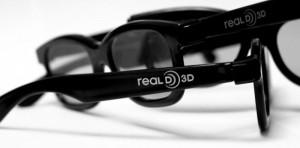marketing
Where the Line Forms: How to Build Anticipation with Your Dental Blog Content
As a teen I remember standing in line alongside my dad, outside our hometown’s twin screen movie theater.
Tickets in hand.
The crowd and anticipation building.
Star Wars…enough said!
Blockbusters have a certain appeal. And that sense of anticipation works for your dental blog content like it does movies.
I recently introduced our young grandson to the Star Wars franchise. I’m building anticipation in him for the approaching release of the latest chapter in the sci-fi series.
He’s hooked. And the promotional teaser for the new film had him uttering a wide-eyed, “Wow!”
Good content – visual or otherwise – elicits an emotional response in one form or another.
What’s “Wow!” and are you getting it?
Unlike my dad and I full of anticipation years ago for the local premiere of George Lucas’ story from a “galaxy far, far away…,” I get that the general public isn’t lining up to read dental content on your website.
There are reasons for this.
The obvious ones: time and perception.
One of those you can’t control. The other you absolutely can.
Perception is everything. Start controlling it.
The first level of defenses fall the moment a potential new patient, client, or current one types in a dental search term in their web browser. Your published content goes to work on your behalf.
And this is where the current online reality shifts for you and your dental practice. The availability of relevant content increases the likelihood you’ll show up somewhere at or near the top of their search results.
Merely having a website with the words “dental,” “dentist,” etc peppered throughout just to stoke the search engine’s fire. Those days are gone.
Welcome to the new digital marketing world of usefulness (the key, by the way, to controlling perception and building anticipation).
Give them something.
If it’s written content, it must be readable, understandable, and above all, useful to their search.
Perception is that dental content is technical (much of it is).
Perception is that dental content is boring (much of it is).
Perception is that dental content is baited and weighted to lure you into the office for something “free” that will lead you into a consult room where you’re introduced to the “need” for hundreds or thousands of dollars of treatment (much of it is).
The rise of “just because” content.
Informed decisions are better than decisions made under pressure. Wouldn’t you rather have the reputation of being a trusted resource that educates people into a decision?
Become an authority. And when people trust you as an authority their perception shifts.
How to shift the perception about your dental content.
1-Launch, re-launch, revise, or revisit your dental blog strategy.
Did you give up blogging too soon? Have you delayed starting? Are there loooong gaps between your most recent post and today?
Your authority as a dental professional increases when you consistently deliver quality, useful, reader-focused information.
CE courses and credits can appear irrelevant (as a credential) for the general public. They’re looking for accessible answers to their questions.
And people are accustomed to reaching for their smart phone or tablet, opening their web browser, typing a word in the search bar…and viola!…reading something relevant to their need.
They will read. And vital to your authority, they’ll return for more if what they find leads to solutions on a physical or emotional level.
2-Keep your blog topped-off with a minimum of two fresh posts per month.
We could debate blog frequency all day. Let’s not.
Instead, set a goal to blog consistently. And by consistent, start with a fresh post every other week (minimum two per month).
Once you get in-the-zone you’ll actually find it easier to up the frequency. In fact, once a week will become your new blogging pace.
Set a goal to publish once a week as you complete a month or two of every other week publishing. Block out some time. Maintain a running list of topics and content ideas.
And if your time is limited or your desire to write is low (as I suspect both to be true since you’re a busy, thriving dental professional who’d rather be doing dentistry) secure the services of a dental copywriter or dental blogger to produce your blog content on a consistent weekly, bi-weekly, or monthly schedule.
3-Listen, learn, and leverage what you discover into new posts.
Be intentional about publishing content that people will read and return for more. And your best intentional strategy is listening.
What are your patients, clients, readers asking about? Talking about?
Ask your dental hygienists what they’re hearing from patients. They’re on the front-lines of patient communication.
Train them, your dental assistants, and front-office team to ask fruitful questions. You’re seeking information you can turn into informational content.
When you do this effectively, patients will get the idea that you’re tapped into their concerns, fears, health and appearance goals, etc. When they feel listened to and heard, they’ll naturally share your content with others.
And shared content equals referrals. And referrals help build your practice.
If you want people to be wide-eyed with anticipation – the “Wow!” – build anticipation through your informative, useful content.
They may not line up. But they’ll know where the line forms when the time comes.
How to Create Irresistible Dental Marketing that People Respond to Again and Again
The hummingbirds are back. How do I know this?
It’s the same reason people will choose your dental services without you feeling the need to hype up your marketing strategies.
Hummingbird market research (not sure if this is legit…but stick with me) says they return to my region in mid-April. And the experts are usually spot on.
But there’s another reason.
I hung my trusty feeder and filled it with an irresistible resource.
Hummingbirds find me because they seek out the bright, flower-like feeder that contains the sweet, delicious, sugar-water (nectar) I provide just outside my kitchen window. These fascinating creatures flit back and forth for the satisfying energy source countless times from April to October each year.
I just gave you 3 big ideas with my hummingbird observations. Did you catch ‘em?
1-Stop feeling the need to “hype-up” your marketing strategies.
Why do you do this?
Frankly, why does anyone do this?
My perspective? It has to do with the age-old, in-your-face marketing approaches we’re accustomed to.
Most of us were raised on TV and radio advertising that uses over-the-top techniques to get your attention (and they still do). And this was in the hopes that you’d remember them when it came time for a buying decision.
Each morning, my wife and I have the local news on our bedroom TV while we’re dressing and preparing for our day. And every morning, much to her frustration, I make critical, tongue in cheek comments about the advertising spots that run.
Many, if not most are local auto dealerships. Their repetitious, ear-worm inducing, hyper voice over specialists make me want to reach through the screen and shout, “Enough already!”
You get my point, right?!
Be careful that the ear-worm effect doesn’t infect your next dental promotion. Screaming at people to schedule, call, “Like” (Facebook ads, contests, etc), etc risks the same as those obnoxious ad pitches – changing the channel.
The downside (for you) – changing the channel translates to changing dental providers.
And if you’re marketing to dental providers (as many readers here do), be careful you don’t risk the same. I’ve watched your mailers being routinely tossed in the trash by the designated mail “screener” when I worked in a dental practice.
No one’s opening your mailer…because you’re not speaking their language. Or you’re using techniques that are a straight-up turn-off.
It’s the equivalent principle of me placing something less appealing in my hummingbird feeder. A couple of drags off that and those lil’ birds are off to sweeter fields.
It’s more attractive (effective) to create a conversation around your service, products, offers than it is to randomly shove it in their face. Because that’s-how-it’s-always-been-done isn’t a strategy, it’s a path to marketing extinction.
- Build a relationship by providing no-strings-attached (free) content via a consistent blog presence on your website.
- Send email that informs or delivers value (see our latest blog post, etc) instead of promoting something or asking readers to schedule.
- Watch your language – or rather your tone – in each communication or content piece your deliver (ditch the salesy, pitchy tone).
2-Listening IS your market research.
Your patients or clients are asking tons of questions. And many of their questions aren’t obvious…unless you’re listening between the lines and in the margins.
Keep your ear to the ground. What are your patients or clients telling you?
Deep dive into your online reviews or post-treatment/post-sales surveys. Locate the truths below the surface (even the ones tough to hear).
Like Jack Nicholson’s character said to Tom Cruise’s in A Few Good Men – “You can’t handle the truth!”
But you also can’t handle not learning from it and improving your service and marketing strategies.
And speaking of market research.
- Survey your patients/clients with a purpose. Avoid routine, meaningless, corporate-ized, canned survey documents.
- Brainstorm some strategic questions that help you understand what your patients or clients are thinking. Then…respond with like-minded content and marketing strategies.
3-Be the expert they’re listening to.
No one really likes to brag about themselves. Unless you’re a card carrying narcissistic, pompous individual (unfortunate for us all, some are).
The better approach – become brag-able. Translation: become a recognizable expert or authority.
You (yes, YOU) provide a unique, branded approach to whatever your specialty is. Perhaps you’re thinking, “But, there are 100’s of dentists in my city or region…!”
So what?
Here’s my question – are they recognized as a go-to provider, not just in treatment…but also with valuable information about that treatment?
Or…the science behind the treatment?
Or…the latest research (explained in street-level terms)?
Or…with clear, non-technical answers to the questions people are asking about the treatment (remember the earlier point on “listening”)?
These days, people want finger-tip access to information about what’s important to them in the moment. Will you be there…with answers?
- If your website doesn’t have a blog or article page – start one…NOW!
- Make your blog a virtual library of relevant, useful information specific to your expertise, services, etc.
- Build a tribe of loyal readers and sharers by promoting your content to your patient or client list via email updates.
And if you’ve delayed starting a blog because you’re concerned about time or have a fear of writing…
- Hire a content curator and/or a copywriter to research and ghost-write your content on a consistent schedule.
It’s your time to stand out as an expert by taking a few intentional steps. Create the content, share the content, and the results will show.
Let’s review…
Stop the hype. Listen as research. Highlight your expertise.
People, like hummingbirds, migrate to where they find what they need.
3D Dental Copywriting That Compels People to Choose Your Services

Saying something is good, great, state-of-the-art, etc. makes a point. But if you want your dental copywriting and dental marketing content to have “punch” you must go deeper.
I occasionally watch a local news program during lunch. It’s one of those noontime programs that features entertaining, informative special segments during the hour long broadcast.
The host anchor made a comment during an episode’s cooking segment that I’ve laughed about many times since. The segment featured the use of beer in a particular recipe for a meat based pie.
The guest cook discussed the various ingredients and in particular the use of beer for added flavor. The host anchor responded off-the-cuff and enthusiastically – “I don’t drink beer…but I sure do like it in my pie!”
I don’t know why the anchor’s statement made me laugh. But after doing so, it made me think.
Products and services have multiple benefits.
Beer, for example, is a refreshing, enjoyable beverage. Even so, many don’t prefer drinking it…but they will add it to a recipe.
That said, the dominant benefit that’s used to market beer is what? It’s not people sitting around, partying, pouring beer into a kettle on a stove top.
There are dominant benefits and there are dimensional benefits.
Copywriting master, Clayton Makepeace says there are “3 deadly blunders” made in marketing copy and content.
- Mistaking features for benefits.
- Mistaking processes for benefits.
- Missing different types of benefits.
His solution: “Drill down to the real, bottom-line rubber-meets-the-road benefits your product (or service) provides.”
Someone “drilled down” and discovered (perhaps while sipping an ice-cold, refreshing brew) that beer adds flavor to a favorite recipe. Beer as a refreshing, relax-with-my-friends beverage is a dominant benefit. Beer as a flavor-enhancing ingredient in your main course is a dimensional benefit.
3D your products and services to add compelling power to your dental marketing copy and content.
Comprehensively inventory your product/service features.
List every objective fact your product/service has. What’s unique, special, compelling, interesting, etc. about the dental service you’re promoting right now?
List everything you can think of.
- What’s its purpose? What does the service do for your patient/client?
- What are its physical characteristics? How will a patient/client experience it visually, by sound, taste, etc.?
- How long does it last? What will the experience be like? When will results be seen? How does it compare?
- What’s been said about it? How have others experienced it? How is it guaranteed?
- What choices are offered? Size? Color? Flavor? Is it customizable?
- How is it priced? Is it dividable by cost per year, month, week, or day?
“Attach a ‘Why’ to each feature”
Feature: Digital x-rays are the latest, state-of-the-art technology. Why: Faster image views means less time in the operatory.
Feature: A TV in every exam room. Why: More comfortable for the patient and time passes quickly during the appointment.
The “Why” forces you to think about benefits. People are sold by benefits not features.
Transform features into benefits.
Force the all-important question before you promote your product/service. And the question is: “What’s in it for me?”
Features must connect. Your patients or clients must experience (via your copy/content) how the service directly improves their life.
What fear does it help them overcome? How does it save them time and money? What have others experienced by using it?
“Dimensionalize each benefit.”
Feature: A TV in every exam room.
Why: More comfortable for the patient and time passes quickly during the appointment.
Benefit: Your appointment is over before you realize it.
Dimensionalized benefit: Great for fidgety kids. The time zips by. In fact, just last week little Jimmy asked if he could stay longer at the office!
Get “emotional” by connecting each dimensionalized benefit with a dominant resident emotion.
Think about how your patient/client will FEEL personally after they’ve enjoyed each benefit your service/product provides.
And there’s another emotional perspective people have too.
How will your patient/client feel as others see them enjoying your services’/product’s practical benefits? That’s an even deeper question.
There’s more to your services and products than meets the eye. Go deeper and tap into the compelling reasons people will buy-in.
Question: Why is it easier to focus on features than diving deeper into benefits? How is dimensionalizing your benefits useful to you? Comment.
Fundamental Reasons Your Dental Email Promotions Succeed
 The hummingbird attracted to our patio feeder is a consistent creature. In a strange sort of way it’s habits remind me about the core value of dental email marketing content.
The hummingbird attracted to our patio feeder is a consistent creature. In a strange sort of way it’s habits remind me about the core value of dental email marketing content.
Our hummingbird friend counts on the ample supply of sweet, red colored sugar water we provide. Because it returns many times a day it’s vital that we not disappoint.
Email remains as a consistently trusted source of content delivery. In spite of its spam-able potential, your dental services will benefit from using it as a consistent list communication tool.
And speaking of benefits – dental email marketing success depends on your commitment to deliver useful, beneficial content.
Email copy smells like spam the moment you abuse it.
Avoid the hand-slap by remembering it’s a permission based channel – so don’t intrude on people’s in-box privacy unless invited.
- Include an opt-in request on all your business or practice forms.
- Simply ask new patients and clients for their email address at their first appointment/meeting or phone conversation.
- Word your request appropriately. Say, “Is there an email address we can use to contact you…?”
People are accustomed to digital communication. Like text messaging, email is an acceptable and normal channel in people’s digital world – so be unafraid to ask for the connection.
Their permission opens the door to casual, friendly, and consistent communication with you.
Well-crafted and well timed email content delivers useful information. Connect your dental email content to a service, new promotion, or timely need and measure the impact.
The hummingbird returns to our patio because he’s accustomed to our generosity. Patients and clients will respond to your email content as you consistently provide them a beneficial reason to do so.
Be generous with your offers and content value. Because you are, people will trust their in-box, time, and dollars to you.
Email loses it’s impact when it looks, sounds, and feels like every other sale-sy message that pings their in-box. Keep your dental email copy relevant to your reader and their needs.
Much of this sounds simplistic, I realize.
There are reasons an email is opened and there are reasons it compels a response.
For now…
- Adjust to using email more consistently to promote your dental services.
- Ask for the opportunity/permission to email your dental patients and clients every chance you get.
- Acquire trust with useful, beneficial, generous email content.
There’s an art to dental email marketing. Stay tuned here for more tips related.
What hang-ups or challenges do you have about using email to promote your dental services? Comment…
4 Words That Can Transform Your Dental Marketing Copy
Benefits sell! That’s core to effective copywriting and the power language you need to promote your dental services.
The Sunday edition of my local newspaper featured two ads that got my attention. How they got my attention is what’s important to this post (realize henceforth – I’m more critical than the average reader).
First, it WASN’T the somewhat eye-candy graphics or the positioning on the page (two big deals to most newsprint advertisers). Second, it WASN’T the headline – at least in the way you might be thinking.
The ad’s colors and placement did draw my eye to it. But it was the headline that bothered me.
The ad writer did the common, believed effective, ad naseum, amateur, I-have-a-gazillion-ads-to-write-today-so-I’ll-take-the-easy-way, feature-first headline approach. And perhaps wrapped it up by asking the design department to throw in some cool colors and bold fonts so people notice.
I confess – I read the ad. Was I compelled?
That’s the question your copy must answer – is it compelling?
And copywriting that compels doesn’t lead with features (everyone does that) it leads with benefits.
This brings to mind a recent meeting I was in. Our dental hygiene team was discussing how to promote oral cancer screenings to our patients. Even though the service is undeniably beneficial and has a relatively low cost point (beyond insurance coverage) some patients aren’t compelled.
No doubt it’s a beneficial procedure. But how do you get to the compelling core benefits without dumbing-it-down with feature heavy content and graphics (what I’ve called “est-syndrome” in previous posts.).
Here are 4 words to keep front-of-mind when mining the benefits of your dental products and services.
1) Urgency (Think-if they don’t get this now the world as they know it will end)
Act now! Limited time offer! You must do better than that.
Give your reader a hot-seat reason to jump NOW to get your product or service.
How can you tell the story in the most compelling way? That’s the question.
Urgency isn’t just about prompting a decision. Urgency is about removing the gap as quickly as possible between decision and action.
2) Usefulness (Think – this is so practical…I must show them)
Not all products and services are ultimately useful. So it makes sense that the promotional copy lacks it too.
Do the hard work required to find a product’s or service’s usefulness that’s not obvious. The ultimate task of your copywriting is painting a picture of practical action.
Who’s using the product/service? What’s happened to them? When did they first discover it’s effectiveness? Where are they looking to use it next?
3) Uniqueness (Think – no one has the “angle” we do. And that “angle” is…)
Being unique is overrated. Especially when it’s confused with creative.
How creative your copy is doesn’t necessarily mean it’s unique. You must find a way to tell the story in a way no one’s told it yet.
This may or may not be the most creative. A unique message is about captivating a person’s buying emotion in a way no one has before so the buying decision keeps repeating itself.
4) Ultra-specific (Think – then think again…and again until it’s crystal clear)
The problem with many marketing messages is just that – they contain more than one message. The key to specificity (love that word) is funneling all the possible ideas into one, compelling message.
Too many messages in a single promotion confuses. Compelling copy is about clarity.
It’s the difference in a laser and a light-bulb. One illuminates, the other penetrates.
Certainly, the end result you desire is more than merely illuminating your “market.” Why not penetrate it?
I’ll admit I’m more critical of marketing copy than the average reader. But I know good copywriting when I see it.
And usually it’s because I’m reaching for my wallet.




